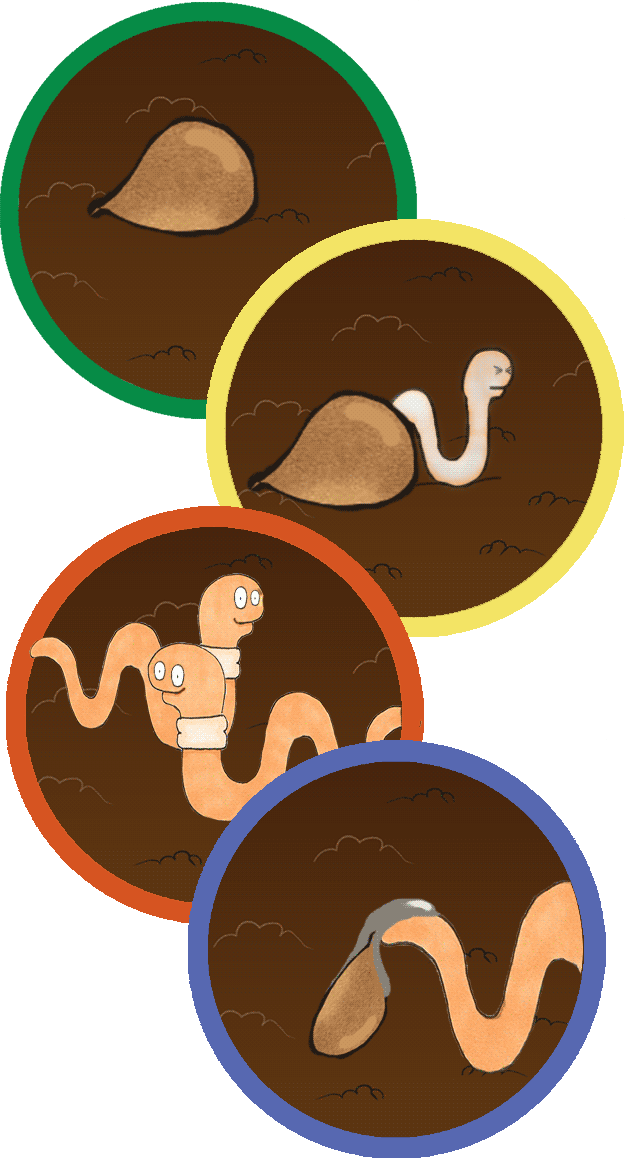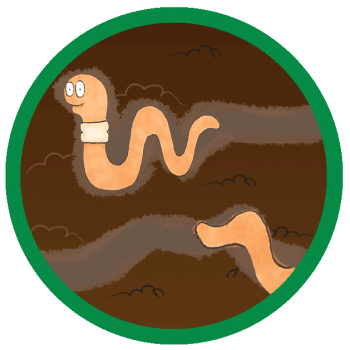Worms
Earthworms are wonderful animals that are important to the environment. They play an essential role in keeping the soil nourished for plants to grow healthy and strong.
Worms Help Compost
Verne the Worm lives in Vanessa’s basement but most earthworms live outside. Earthworms live underground in the top layers of soil where they eat dead leaves and other organic material. When worms poop, they leave their castings behind which become nutritious food for plants. They are amazing composters!
Take care not to take earthworms from outside. Wild earthworms will not survive for long in an indoor worm bin. Verne the Worm is a red wriggler which is a type of worm that thrives in worm bins.
Worms Help the Soil
When worms are moving around in the soil, they create burrows. These burrows help soil drainage so water can flow through. At the same time, the burrows promote aeration so air can flow through the soil. This is important for plant root systems as well as insects and other organisms which need air to breathe.


The Life Cycle of Worms
Earthworms start as eggs inside a hard cocoon. Each cocoon may can have up to about twenty eggs, but only one or two will emerge. In warm, optimal conditions, the eggs may hatch in only a few weeks. But if the conditions are not ideal, they can take months to hatch.
After they hatch, the baby worms (called hatchlings) are tiny, thin, white and nearly transparent. Depending on the species, they will turn color as they mature. They can become greyish, brown, or even red.
Adult worms are hermaphrodites. This means they have both ovaries and testes. Ovaries produce eggs and testes produce sperm that can fertilize eggs. However, one worm cannot make new baby worms by itself; it must mate with another worm.
After mating, each worm forms a small cocoon near the “collar” of the worm. As they wriggle away, the cocoon is released and the eggs inside develop until it is time to hatch.
